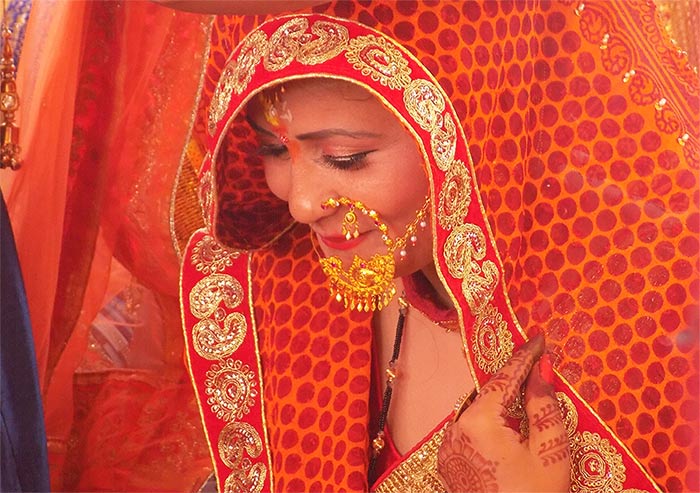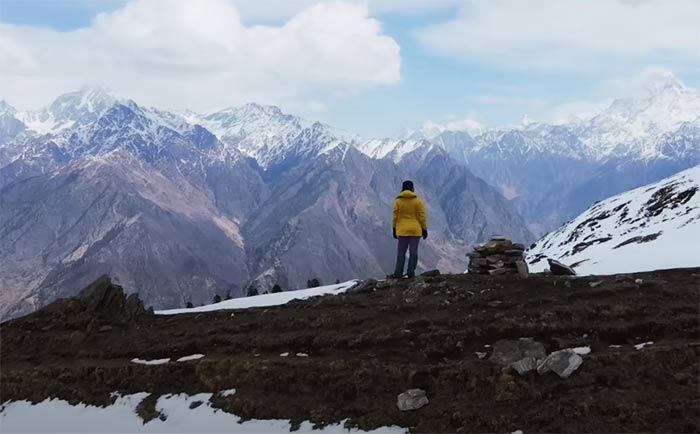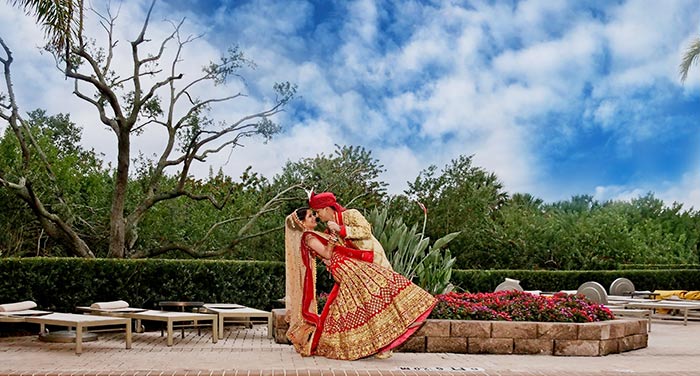Uttarakhand is renowned for its rich Garhwali and Kumaoni cultural heritage. The region is characterized by diverse traditions, religions, fairs, festivals, folk dances, and music, each contributing to the unique and distinct cultural identity of the communities residing therein.

Garhwali Culture
The primary language spoken in the region is Garhwali, characterized by several dialects such as Jaunsari, Marchi, Jadhi, and Sailani. The demographic makeup of Garhwal comprises diverse ethnic groups and castes, including Rajputs with presumed Aryan origins, Brahmins who migrated either contemporaneously with or subsequent to the Rajputs, and tribal communities in the northern tracts of Garhwal.
The tribal population encompasses groups such as Jaunsaris, Jadhs, Marchas, and Van Gujars.
Kumauni Culture
The residents of Kumaon converse in 13 distinct dialects, including Kumaiya, Gangola, Soryali, Sirali, Askoti, Danpuriya, Johari, Chaugarkhyali, Majh Kumaiya, Khasparjia, Pachhai, and Rauchaubhaisi, collectively classified as the Central Pahari language group. Kumaon boasts a rich folk literature, encompassing narratives of myths, heroes, heroines, acts of bravery, deities, and characters derived from the epics of Ramayana and Mahabharatha.
The region’s predominant traditional dance form, Chhalaria, is closely tied to its martial traditions. Festivals in Kumaon are celebrated with great enthusiasm, featuring traditional dance performances that continue to thrive in contemporary times.
History of Uttarakhand
Uttarakhand, a region rich in history, culture, ethnic diversity, and religious heritage, has witnessed human habitation since prehistoric times, as evident from ancient rock paintings, rock shelters, and Paleolithic stone tools that date back hundreds of thousands of years. The archaeological landscape further attests to early Vedic practices in the area around 1500 BCE.
Despite the archaeological insights, the early history of Uttarakhand remains somewhat elusive. Early scriptures mention diverse tribes residing in the Garhwal and Kumaun regions, including the Akas, Kol-Munds, Nagas, Paharis (Khasas), Hephthalites (Hunas), Kiratas, Gujjars, and Aryans. The Paharis, a dominant group in both Garhwal and Kumaun, saw a transformation with the arrival of Rajputs and high-caste Brahmans from the plains around the 13th century.
Post-independence, Uttarakhand gained prominence when the princely state of Tehri-Garhwal was amalgamated into the United Provinces of India in 1949. The adoption of a new Indian constitution in 1950 led to the renaming of the United Provinces as Uttar Pradesh, becoming a constituent state of India. However, the challenges of addressing the needs of the northern region’s populace, characterized by unemployment, poverty, inadequate infrastructure, and overall underdevelopment, prompted calls for a separate state.
The quest for autonomy gained momentum in the 1990s, reaching a critical juncture on October 2, 1994, when police intervention in the town of Muzaffarnagar resulted in casualties among demonstrators. The separatist movement persisted over the following years, culminating in the establishment of the new state of Uttaranchal in November 2000. Subsequently, in 2007, the state was rechristened Uttarakhand, reclaiming its historical name before statehood.
Festivals of Uttarakhand
Kumaoni Holi Festival :The Kumaoni Holi festival is celebrated in three distinctive forms: Baithki Holi, Khari Holi, and Mahila Holi. A notable aspect of this celebration is the integral role of music in its observance.
Harela Festival: Harela marks the onset of the rainy season or monsoon and is observed by the Kumaon community during the month of Shravana (July-August). Following Harela is the festival of Bhitauli, celebrated in the month of Chaitra (March-April). This agricultural-centric festival involves women sowing seeds in the soil, culminating in the reaping of the harvest known as harela.
Jageshwar Fair: The Jageshwar fair occurs at the temple dedicated to Lord Shiva in Jageshwar on the fifteenth day of the Baisakh month, spanning late March to early April. A distinctive ritual during the fair involves individuals taking a dip in the pool known as Brahma Kund based on religious beliefs.
Kumbh Mela: The Kumbh Mela stands as one of the largest and most renowned festivals in Uttarakhand. This three-month-long event occurs once every four years, rotating between Allahabad, Haridwar, Ujjain, and Nasik, making it an event held only once in every 12 years at any given location.
Folk dance and music of Uttarakhand
The lives of Uttarakhand residents are imbued with a rich tapestry of music and dance, with the latter holding a significant place in their cultural traditions. Various folk dances contribute to this cultural vibrancy:
Barada Nati: A popular dance form originating from the Jaunsar Bhawar area in the Dehradun district.
Langvir Nritya: An acrobatic dance form predominantly performed by men.
Pandav Nritya: This dance form narrates episodes from the Mahabharatha through a captivating blend of music and dance.
Dhurang & Dhuring: These are well-known folk dances associated with the Bhotiya tribals.
Folk Songs of Uttarakhand
Basanti: A composition crafted to usher in the spring season.
Mangal: A melodic rendition traditionally sung during marriage ceremonies.
Jagars: Utilized in the worship rituals dedicated to spirits and ghosts.
Bajuband: Explores themes of love and sacrifice within the context of shepherd life.
Khuded: Conveys the poignant narrative of a woman experiencing the anguish of separation from her husband.
Chhura: Chronicles the wisdom and experiences of shepherds, offering guidance to the younger generation.
Foods of Uttarakhand
The culinary landscape of Uttarakhand is primarily influenced by the Garhwali and Kumaoni cuisines, representing two of its major regions. Characterized by simplicity and an emphasis on locally sourced ingredients, the dishes of Uttarakhand avoid an overwhelming use of complex spices. Noteworthy among the delectable and renowned specialties of Uttarakhand are those cooked over a slow fire, often featuring lentils. Some of the most enticing culinary offerings include:
Urad Dal ke Pakode: Spicy pakoras crafted from assorted pulses.
Phanu: A dish prepared from a variety of lentils.
Jhangore ki Kheer: A sweet delicacy made with Jhangora.
Chainsoo: A dish created from black gram dal.
Bhang ki Chutney: A tangy chutney prepared by combining roasted bhang and cumin seeds with lemon juice.
Traditional dress of Uttarakhand
1. Traditional Attire of Garhwal Hills Residents
The residents of Garhwal Hills exhibit a distinctive clothing pattern influenced by the region’s cold climate, utilizing wool obtained from sheep or goats to craft warm garments.
Traditional Dress for Men
The prevalent dressing style features either a Dhoti or Lungi as the commonly worn lower garment, paired with vibrantly colored Kurtas as the upper garment. Completing this traditional ensemble requires the addition of headgear or a turban. Kurta-Pyjama stands out as another widely embraced alternative among the men of Uttarakhand. Both men and women opt for woolen jackets and sweaters during the winter season.
Traditional Attire for Women
A hallmark of women’s attire in Uttarakhand is the Ghagri, a long skirt complemented by a vibrantly colored Choli (Indian blouse) and a head-covering known as an Orni. The Orni is securely fastened to the waist, constituting the traditional dress for women in both Garhwali and Kumaoni communities. Kumaoni women, particularly during weddings, don the Ghagra-Pichora, akin to the Ghagra Lehenga-Choli, where Pichora serves as a decorative veil adorned with gold and silver embroidery.
Language of Uttarakhand
The predominant language spoken by the majority of Uttarakhand’s population is Indo-Aryan. Hindi serves as the official language of the state, with Hindustani emerging as the primary spoken language, incorporating elements from both Hindi and Urdu. Additionally, regional languages such as Garhwali and Kumauni, both classified as Pahari languages, along with Punjabi and Nepali, are also utilized in Uttarakhand.
Pilgrimage Centers in Uttarakhand
Uttarakhand is home to some of Hinduism’s most sacred shrines and temples, serving as significant pilgrimage centers nestled within the mountains. The Yamnotri temple, situated in the western part of the Garhwal region at an elevation of approximately 10,600 feet (3,200 meters), venerates Yamuna, the Hindu river goddess, with the Yamuna River originating from the nearby Yamnotri glacier.
Gangotri shrine, located in the northwestern expanse of the state amidst cedar- and pine-wooded surroundings at nearly 10,000 feet (3,000 meters), features a natural rock linga submerged in a river. According to mythology, this site symbolizes the spot where Shiva received the goddess Ganga in his matted locks. Kedarnath, southeast of Gangotri and standing at an elevation of nearly 12,000 feet (3,500 meters), houses a stone temple dedicated to Shiva, believed to be over a millennium old. A prominent statue of Nandi, one of Shiva’s principal attendants, graces the temple entrance.
The Badrinath temple, located at approximately 10,300 feet (3,100 meters) on the banks of the Alaknanda River, serves as the abode of the god Vishnu. The temple’s idol, crafted from black granite, is reputedly installed by the 8th-century philosopher Shankara.
Hemkund Sahib, an essential Sikh shrine and pilgrimage site, is perched at an elevation exceeding 13,000 feet (4,000 meters) in north-central Uttarakhand. This revered site commemorates the meditation years of the 10th Guru of the Sikh religion, Gobind Singh.
Uttarakhand stands as a convergence point for diverse traditions, ethnic groups, and languages, creating a captivating mosaic that defines the unique beauty of the state. A visit to this enchanting region promises each traveler an extraordinary experience.
We invite you to explore the wonders of Uttarakhand, where the rich tapestry of cultures and traditions awaits, ensuring an unforgettable journey for every visitor.
Frequently Asked Questions (FAQ)
Uttarakhand’s culture is marked by its rich Garhwali and Kumaoni heritage, encompassing diverse traditions, religions, festivals, folk dances, and music. The region’s unique cultural identity is shaped by the communities residing there.
The primary languages spoken in Uttarakhand are Garhwali and Kumaoni, each with various dialects. Additionally, Hindi serves as the official language, while regional languages such as Punjabi and Nepali are also used.
Garhwali culture includes diverse ethnic groups, including Rajputs, Brahmins, and tribal communities. Kumaoni culture boasts 13 distinct dialects and a rich folk literature, with festivals celebrated with traditional dance performances.
Uttarakhand has a history dating back to prehistoric times, evidenced by ancient rock paintings and tools. The region saw the influence of various tribes, and post-independence, it gained prominence with the establishment of the state of Uttarakhand in 2000.
Uttarakhand celebrates diverse festivals like the Kumaoni Holi, Harela, Jageshwar Fair, and the Kumbh Mela. Each festival has unique traditions, rituals, and cultural significance.
Uttarakhand boasts vibrant folk dances like Barada Nati, Langvir Nritya, Pandav Nritya, Dhurang, and Dhuring. Folk songs such as Basanti, Mangal, Jagars, Bajuband, Khuded, and Chhura contribute to the cultural richness.
Uttarakhand’s cuisine is influenced by Garhwali and Kumaoni styles, featuring dishes like Urad Dal ke Pakode, Phanu, Jhangore ki Kheer, Chainsoo, and Bhang ki Chutney, emphasizing locally sourced ingredients.
The traditional attire includes Dhoti or Lungi paired with Kurtas for men, along with woolen jackets during winters. Women wear Ghagri, Choli, and Orni, and during weddings, Ghagra-Pichora with elaborate embroidery is common.
The predominant language is Hindi, serving as the official language. Other languages include Garhwali, Kumaoni, Punjabi, and Nepali.
Uttarakhand is home to sacred shrines like Yamnotri, Gangotri, Kedarnath, Badrinath, and Hemkund Sahib. These pilgrimage sites hold great religious significance and attract devotees from across the country.
The demand for autonomy gained momentum in the 1990s, leading to the establishment of Uttaranchal in 2000. The state was later renamed Uttarakhand in 2007.
Harela marks the onset of the monsoon season, celebrated by the Kumaon community. It involves sowing seeds and culminates in the reaping of the harvest known as harela.
Residents of Garhwal Hills wear woolen garments due to the cold climate. Traditional attire for men includes Dhoti, Lungi, or Kurta-Pyjama, while women wear Ghagri, Choli, and Orni.
The Kumbh Mela occurs once every four years, rotating between Allahabad, Haridwar, Ujjain, and Nasik. It takes place only once in every 12 years at any given location.
Basanti, Mangal, Jagars, Bajuband, Khuded, and Chhura are renowned folk songs conveying various themes and cultural aspects of Uttarakhand.




